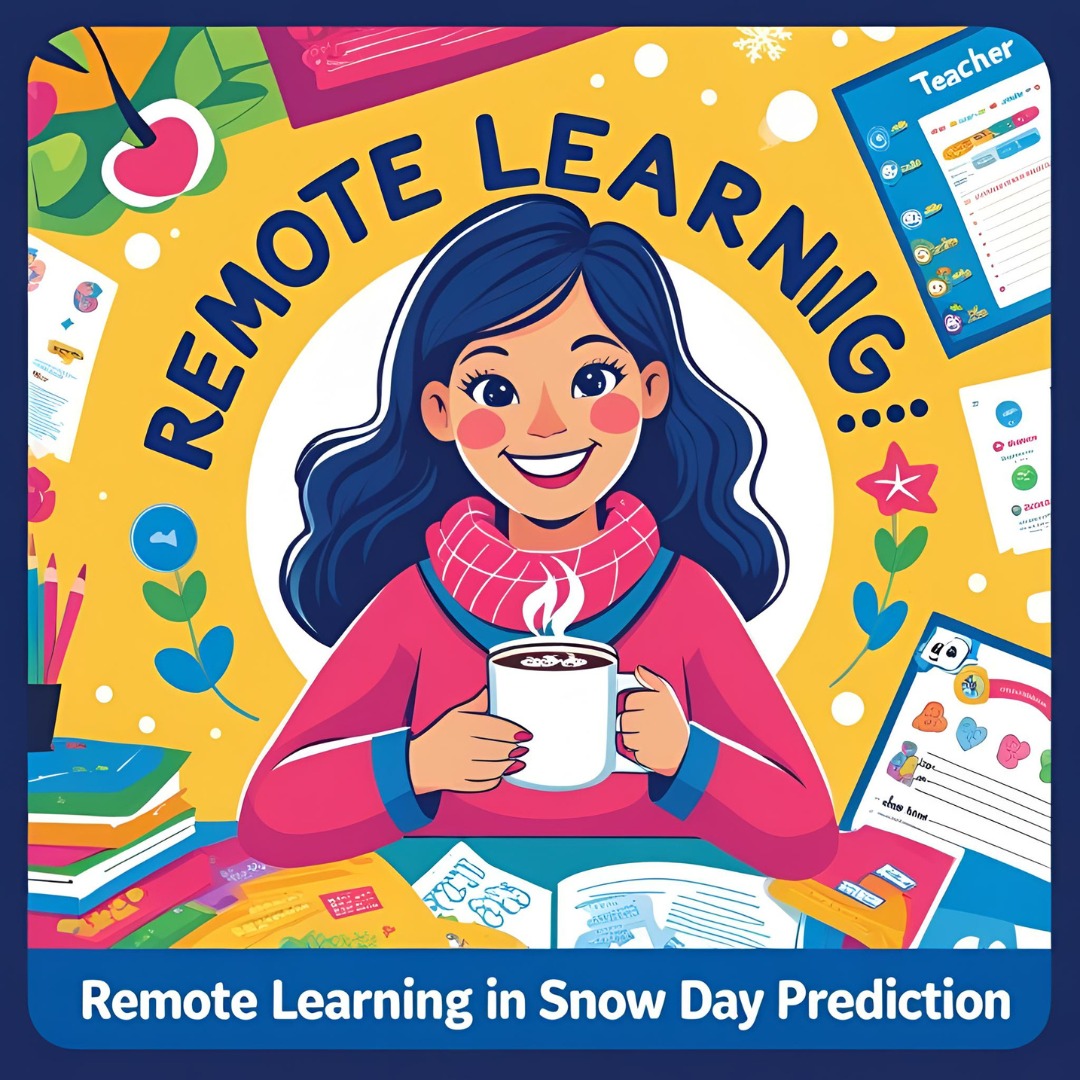Remote learning in snow day prediction

Remote learning in snow day prediction
Introduction:
In any of the regions in North America that experience significant winter weather, snow day predictors have become indispensable for students, parents, teachers, and administrators. Snow day predictors are applications that leverage algorithms, local weather data, and past weather data, in their predictions around the chances a snow day will happen or when decreasingly probabilities were near certainty starts to become true and cause a snow day. While it would be easy to think of a snow predictor app as a useful convenience, its utility has effects on the continuity on education, safety and planning.

Snow Day Prediction Tools:
Snow day predictors, the most popular being the Snow Day Calculator, look at the following tools to determine the chance that a snow day will exist.
- Weather Data Resources: Accurate snowfall forcasts and timely meteorological information are essential, including current and past temperature trends, precipitation timing, and wind chill effects. Data is collected from the reknowned sources AccuWeather (weather data provider), Fox 8 (weather station and snow day calculator provider), Snow Day Finder (alternative snow day prediction service), Perry Weather, Inc. (weather monitoring service), Instant Weather, Inc. (weather service provider) and Root (Canada-based weather service provider). Timely information and accurate future snowfall forecasts are essential for estimating storm severity.
- Historical Trends: This data helps determine how often school has been cancelled or closed previously under conditions that were similar to the proposed meteorological data. When measuring the probability to close school, relying on historical variances informs the model, making the outcomes more credibly high and low.
- School District Rules: When predicting snow days, it is key to develop based on local conditions, including the districts plans containing specific procedures and rules about when to close or delay for school evacuations. If your using a predictor, and it isn’t using local rules it can change the predictive intensity.
- AI-powered predictions: For our level of predictors, if the platform uses AI it could well offer appreciably higher accuracy for measuring the probability of school closure. The predictive input and algorithms could be bountiful as opposed to simple.
Benefits for Educational Planning:
There are many advantages to implementing snow day predictors into educational planning:
- Planning Operational Decisions: It can help administrators arrive at an operational decision around closure, ensuring students will stay safe while minimizing too many moves before that decision is made.
- Keeping Options Open for Remote Learning: With stronger emphasis on virtual means of learning (especially post-COVID-19), schools can quickly make that shift while still managing the closure decision and maintaining educational continuity.
- Timely Parent Decisions: This allows parents to have relevant information for organizing childcare or scheduling around a potential event and determining when they need to let their employer know about needing time off.
- Resource Planning: Schools can better prepare and make decisions about utilizing resources by having this use for snow day predictors in planning ahead of time, such as snow removal services etc.
Safety and Community Readiness:
In addition to education, snow day predictors are a vital piece of a wider safety message:
- Transportation Safety – Schools that monitor snow and ice can avoid accidents involving buses and student drivers.
- Community Alerts – Predictors can function as a early warning system to prepare a community for severe weather.

Challenges and Considerations:
While snow day predictors offer numerous advantages, certain challenges persist:
- Data Accuracy: The reliability of predictions hinges on the quality of meteorological data. Inaccurate forecasts can lead to unnecessary closures or unpreparedness.
- Technological Access: Not all students have equal access to remote learning tools, potentially exacerbating educational disparities during closures.
- Policy Variability: Differences in school district rules can complicate the standardization of predictive models.
Conclusion:
Snow day predictors have revolutionized how schools handle winter weather disruptions in the eduactional sector. By combining meteorological data, historical trends, and AI powered predictions, these tools facilitate informed decision making, ensuring safety and continuity in learning. As technology advances, the accuracy and utility of snow day predictors are poised to improve, further solidifying their role in modern education and community safety.